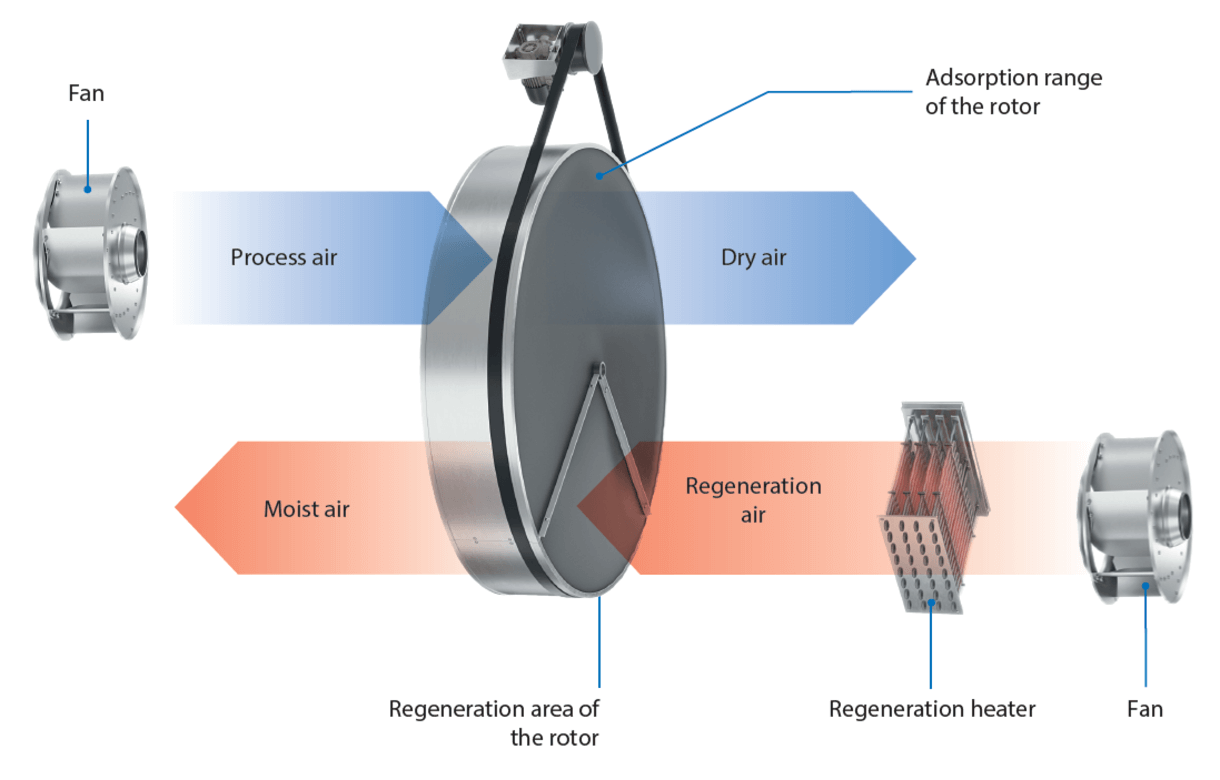
How do Desiccant Dehumidifiers Work
Desiccant dehumidifiers work by using a large desiccant wheel to adsorb moisture from the process air stream. As the process air is dried, the moisture content of the wheel rises. To remove this moisture the wheel is in constant rotation and a second air stream is heated and passed through the wheel. This heated air steam picks up the moisture from the wheel, in turn drying the wheel so it is reactivated and able to continue to dry the process air.

Desiccant dehumidifiers are one of two main types of dehumidifiers. The other common type is a condensing dehumidifier. These are often used for pools or damp basements. Desiccant dehumidifier excel in dryer environments compared to condensing dehumidifiers, and are essential for low dew point applications.
The graphs below show when each type of dehumidifier is more efficient.



Desiccant dehumidifiers can work really well in the right location, but some people expect too much from them and are then disappointed. We have an Eva-dry 333 mini dehumidifier at home and it is long lasting and works great.
Selecting the right tool for the job is important. Thanks for the feedback.
I live in a temperate climate (Scotland, UK), and have tried both desiccant and compressor/refrigerant dehumidifiers. Personally, I have found the desiccant variety to be far more effective, especially when drying clothes. The problem with compressor/refrigerant dehumidifiers is that they rely on a room already being warm (+20°C), so if conditions aren’t right, they can fail pretty hard. Desiccants on the other hand generally don’t care what the room conditions are like, and will work at 100% regardless, any time of the year. This makes desiccant dehumidifiers the clear winner in my book.
I agree. There are several different options when it comes to dehumidifiers, and the one you choose depends on the space in which you plan to use it, as well as the humidity levels. There are small capacity models for a single small room, large capacity models for larger areas such as a large room, basement, or an apartment, and there are whole-house models available as well if you live in a very humid climate, you suffer from significant allergies, or you have a large home.
Thanks for the information. sounds so great and helpful. Kudos!
With so many benefits of purchasing a whole house dehumidifier, it seems like a clear cut decision. But every home and HVAC system operates differently.